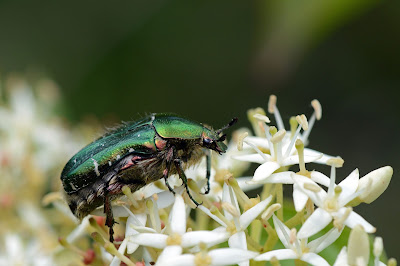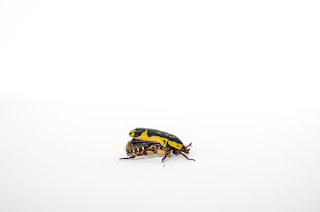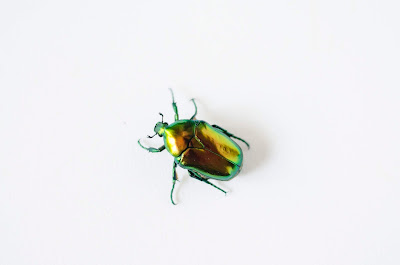About 2018 and my breeding goals for 2019
A bit of a biography on last year, on which way I want to go, how I feel about beetlebreeding now and more:
What was 2018 for me:
Busy:
This year for me was very busy, managing the household, treating my lady right, my profession as dietitian, voluntary work and the starting of a new company. This all made it for me sometimes too much too breed all these dammn beetles :). In the end this isn't so much of an issue when your breeding room is in the same house you live in. You do some little maintenance and you are set for another week. For me sadly my breeding room is far away from where I live. This is because the appartment I live in doesn't provide enough space to prepare all substrate and rear all larvae I want too. So I'm forced to have my breeding room elsewhere, luckily in an area with lots of oak/beech forests, where I can easily gatter all what's needed to do the breeding.
Due to this big distance and the usual weekend activities, I can only visit the breeding room every few weeks and with this many species in breeding I sometimes spend whole days checking up on larvae, preparing substrate and doing other kinds of preparations. Allthough I enjoy this a lot, I sometimes had the feeling this was getting a bit out of hand, and I had to need to revise this situation.
This blog and communication:
2018 was for me also the year I started to put real effort into this blog. I am proud of what I have achieved so far, the several thousands of readers who pass not only from facebook, but also just by googling some terms I have written about. This also got me into contact with other enthousiast whom I might have never met in any other way. I learned a lot mostly from email communication with other breeders and insect enthousiasts. Communication which is well argumented and documented unlike the garbage you most often see on facebook. Thank God (should he exist, which he does not).
A collecting trip to Czech Republic and meeting a friend:
2018 was also the year I did my first serious collecting trip. The very first time I met Petr Malec, and under his good guidance learned the basics of hunting Cetoniidae. This entire trip was for me a real eye-opener, and I still have vivid memories of al these shiny green beetles buzzing around during the midday heat. I realise that this is one of those things that bring me a deep sort of joy and learn me the most about these fascinating animals. I hope to go collecting every year from now on.
Although I already had quite a lot of passion for the European Cetoniidae, this trip made me even more interested in them. Now I feel like I have to breed them all.
Although I already had quite a lot of passion for the European Cetoniidae, this trip made me even more interested in them. Now I feel like I have to breed them all.
 |
| Baited window-trap up in the air |
 |
| Nice Lucanus cervus as seen in Southern Morovia, Czech republic |
A discussion about European beetlebreeding:
When it comes to beetlebreeding and what happened in the community, for me a key moment was a (heated) discussion on social media about the differences between European beetlebreeding culture and the Japanese one. A major difference is Europe's Cetoniidae-oriented culture, whereas Japan is more Lucanidae and Dynastidae focused. I noticed some people thinking the breeding of Cetoniidae is somehow more easy, less challenging than breeding Lucanidae or Dysnastidae. Allthough this is ofcourse the case for some easy species, I strongly disagree with this point of view. Cetoniidae still have a great amount of species that have never been bred for multiple generations, or are associated with very poor and challenging habitats. On the other side many Lucanidae and Dynastidae are already bred on almost factory scale, with the main challenge left is breeding very big beetles which will hopefully exceed the natural worldrecords. For me it is way more challenging try to catch a beetle that has never been bred, and trying to figure out how to breed it.
Also on reproduction-rate, diapause and other factors associated with breeding of more difficult Cetoniidae, I think there is still mountains of work to do. This, in my opinion, exceeds the difficulty of importing a kisnhi-bottle and putting a larvae in it, or translating some Japanese breeding magazines (allthough they sure are interesting and very high-tech).
Also in the discussions I noticed a serious misunderstanding of the unique identity of European Cetoniidae-oriented breeding culture. These and later discussions were moments in which I realised more than ever what I wanted to achieve, which things I want to specialise on and which things within beetlebreeding I want to uncover on this blog, what I want to be an ambassador for.
Also on reproduction-rate, diapause and other factors associated with breeding of more difficult Cetoniidae, I think there is still mountains of work to do. This, in my opinion, exceeds the difficulty of importing a kisnhi-bottle and putting a larvae in it, or translating some Japanese breeding magazines (allthough they sure are interesting and very high-tech).
Also in the discussions I noticed a serious misunderstanding of the unique identity of European Cetoniidae-oriented breeding culture. These and later discussions were moments in which I realised more than ever what I wanted to achieve, which things I want to specialise on and which things within beetlebreeding I want to uncover on this blog, what I want to be an ambassador for.
All in all, 2018 was for me a good beetlebreeding year, in which I became much more conscious on what and who I like, and what and who I don't like.
Goals for 2019:
Beetle/life balance and breeding goals:
As I will start teaching in early februari and start a new contract in a college in Antwerp, my professional carreer will be more busy than ever, on the brink of what is manageable. This will surely also have it's impact on my breeding, and will force me to revise how I do it.
Since some months I got more interested in intraspecific variation of beetles. My goal shifted from wanting to breed many different species, to trying to obtain those super rare wild forms. In order to achieve this you need to hit the odds for some rare genes to express. In practice this means you need to breed a lot, like realy A LOT, of the same beetle and selecting carefully each generation. Doing this will hopefully also make the management of the breeding a little bit easier, as lifecycles and substrates are easier to manage with a lot of the same species vs. 30 different species.
Since some months I got more interested in intraspecific variation of beetles. My goal shifted from wanting to breed many different species, to trying to obtain those super rare wild forms. In order to achieve this you need to hit the odds for some rare genes to express. In practice this means you need to breed a lot, like realy A LOT, of the same beetle and selecting carefully each generation. Doing this will hopefully also make the management of the breeding a little bit easier, as lifecycles and substrates are easier to manage with a lot of the same species vs. 30 different species.
Beetle collection:
My sweet lady gave me my first display box for my birthday, this is a hallmark for me. I will now start to carefully collect and prepare all my deceased beetles, and some wild specimens. Being a chaotic boy who sometimes lacks discipline, setting up a collection like it should be done, should be somewhat a hassle (which I can not wait to start). Some of my first beetles for the collection:
 |
| Nice Cetonia aurata pisana from Corse. Common, but precious to me. |
More trapping:
Ah, the sweet joy of hunting beetles. Now that I have got the hang of it, I cannot wait to do more collecting. Notice for me that this joy of trapping almost never results in killing the actual beetles. I can just have the greatest joy finding these beetles, especially if you can find something rare either in species or in variation. This year I hope to learn more about pitfalltrapping Carabidae in spring and summer, and digging for Carabidae in winter. Learning this I can always enjoy the hunt, without the dependence of seasonality, on which all Cetoniidae are bound.
Also I hope to get some time off at work in spring to do some crazy collecting trip somewhere.
Also I hope to get some time off at work in spring to do some crazy collecting trip somewhere.
This blog:
In between all the running around, catching trains, breeding beetles and working, I hope to still put up plenty of content on this blog. I have no lack of ideas to write about, only a lack of time :).
I notice that writing about breeding forces me to take some deep dives in the literature, and for me it is very rewarding to translate all this difficult scientific texts ,which are full of terminology and written in different languages, back to easy reading and well understood English.
I notice that writing about breeding forces me to take some deep dives in the literature, and for me it is very rewarding to translate all this difficult scientific texts ,which are full of terminology and written in different languages, back to easy reading and well understood English.
Also I have the ambition to make this blog the real "Belgian Beetle Breeding" I had the ambition to make it. I wish to report more on the achievements and visions of other Belgian or European beetlebreeders. Also I hope to translate some pages of this blog to French and Dutch, as I notice some people (especially natural french-speakers) struggle to read big amounts of English texts. Therefore this year I might collaborate with another fellow Belgian beetlebreeder, who can help do the translation and also put up his own content on this blog, which I in turn will translate to English and Dutch.
Species I want:
Ofcourse the hunger for new species is never completely over. I would still like to add new species to the list. Most importantly the following:
Cetonia aurata pisana from Corse
Potosia angustata
Mecynorhina savagei
Mecynorhina oberthuri
Let's make it happen :)






Comments